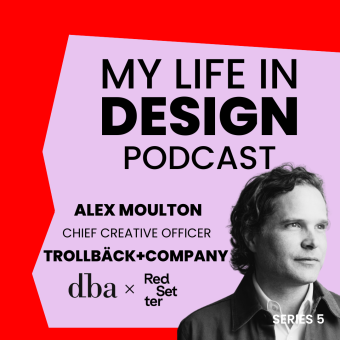Our thinking
Why webinars work and ceviches destroy good ideas
Alex Blyth
Editorial Director
Why webinars work and ceviches destroy good ideas
By Alex Blyth, Editorial Director
Do you remember in the old days — when we used to work in studios and offices and go places in planes and trains — when an enthusiastic young person in the agency would suggest holding an event?
“Come on,” they’d urge, all wide-eyed enthusiasm. “It’ll be great. We can get clients to talk about the work we’ve done together. We can have drinks and sushi. We could get all those people who are on our database but who never seem to read our newsletter for some reason to come along.”
“It won’t work,” some old hand would mutter. “We tried it before, and no one ever turns up.”
“Oh don’t be so cynical,” some other callow youth would chastise. “We’ll just do it better this time. Make sure people do turn up. Why don’t we do ceviches instead of sushi. People love ceviches. We could invite some journalists. They’d love that.”
“No they won’t,” said the chief cynicism officer. “Journalists don’t turn up to anything.”
“Oh they’ll turn up to this!”
And so a few weeks later you’d all be there, the studio decked out to look its best, ceviches and seltzers ordered for all those who’d dutifully RSVPed, and the team waiting expectantly.
And no one would bloody turn up.
I mean, some existing clients would, and a few suppliers, and some students hoping for an internship, and maybe one potential client but it turned out he was scoping out job opportunities too. And there would definitely be no journalists. They literally never turn up for anything. Not even their own weddings.
This would be repeated roughly once every five years. Just long enough for enough people to forget it was a bad idea and try it again.
So, when we were all locked down earlier this year, and someone in my team perkily suggested organising some webinars for an agency, I told them not to bother. It’s just like the agency event idea I said — a total waste of everyone’s time and money. Steer well clear I said, congratulating myself on my worldly-wise perspective. Lucky I’m here to talk all this sense.
Fortunately no one took any notice of me.
They went ahead and organised it. They increased their videoconferencing capacity to 100, then 500 when the calendar acceptances came flooding in, and in the end it was more like 600 people. People actually turned up. It was probably because they didn’t have to leave their houses, find a smart shirt to wear, and pretend to like ceviches.
It wasn’t just a one-off either. We’ve done about half a dozen so far, they’ve all been well attended, have started productive conversations between agencies and potential clients, and briefs have landed following them.
I’ve had to grudgingly concede I may have been wrong. I’ve had to develop a more nuanced position on webinars. No longer are they a total bloody waste of everyone’s time. From now on they’re a total waste of everyone’s bloody time if…
a. You can’t find an interesting niche topic. I mean really niche. The session on Retail for Visitor Attractions in a Socially Distant Age that we worked on with the brilliant Lumsden Design was a perfect example of this. The agency is famous for designing retail spaces in visitor attractions like MoMA, Warner Bros Studio Tours, and the V&A, so the topic was perfect for them. More importantly it was top of mind for many people running those spaces, and hundreds turned up.
b. You can’t persuade anyone interesting to talk at it. You’ll need good relationships with your clients or some industry experts. A mix of current and prospective clients can work very well.
c. You think the practicalities will take care of themselves. They won’t. you need to get the right platform, make sure all the panellists have the right kit, and pick the ideal time. There are plenty of conflicting views on webinar timings. We’ve found 2pm BST on a Thursday to work best.
d. You buy into all that ‘if you build it they’ll come’ nonsense. They won’t — you need to tell them about it. Promote the event with some sharp copy across all channels, making sure you tap into panellists’ networks.
e. You don’t want to bother with a rehearsal. Always rehearse. Map out who’ll say what and run it through together.
f. You won’t follow up. You need to thank attendees, and send them as well as the people who couldn’t make it a recording of the event. It’s a vital step in developing it from a positive event into a conversation and then a brief.
There’s a lot to get right, but it’s a lot less hassle than organising caterers and persuading designers to tidy up the studio. I actually think that even when we are allowed back on trains and planes and into our workplaces, the 2020 phenomenon of the webinar will endure.
It turns out people were always interested in the topics discussed at agency events. It was just the travel and all the other hassle that put them off. If we can keep webinars as a way to start those conversations without trying to politely eat canapes at the same time, and without pumping CO2 into the atmosphere, and then also be there to put our children to bed, it’ll be a good thing for all.
And no one ever needs to suggest an in-person agency event ever again. Or at least until 2025.


